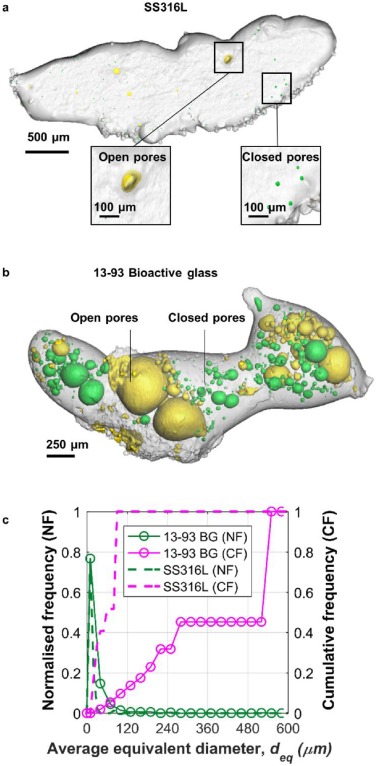Laser-matter interactions in additive manufacturing of SS316L and 13-93 bioactive glass revealed by in situ X-ray imaging

Laser-matter interactions in laser additive manufacturing (LAM) occur on short time scales (10-6 – 10-3 s) and have traditionally proven difficult to characterise. We investigate these interactions during LAM of stainless steel (SS316 L) and 13-93 bioactive glass powders using a custom built LAM process replicator (LAMPR) with in situ and operando synchrotron X-ray radiography. This reveals a range of melt track solidification phenomena as well as spatter and porosity formation. We hypothesise that the SS316 L powder absorbs the laser energy at its surface while the trace elements in the 13-93 bioactive glass powder absorb the laser energy by radiation conduction. Our results show that a low viscosity melt, e.g. 8 mPa s for SS316 L, tends to generate spatter with a diameter up to 250 µm and an average spatter velocity of 0.26 m s-1 and form a melt track by molten pool wetting. In contrast, a high viscosity melt, e.g. 2 Pa s for 13-93 bioactive glass, inhibits spatter formation by damping the Marangoni convection, forming a melt track via viscous flow. The viscous flow in 13-93 bioactive glass resists pore transport; combined with the reboil effect, this promotes pore growth during LAM, resulting in a pore size up to 500 times larger than that exhibited in the SS316 L sample.